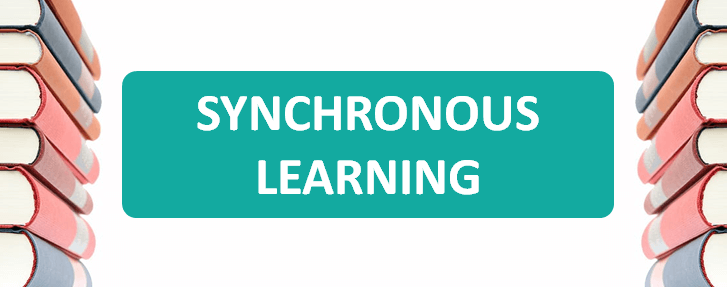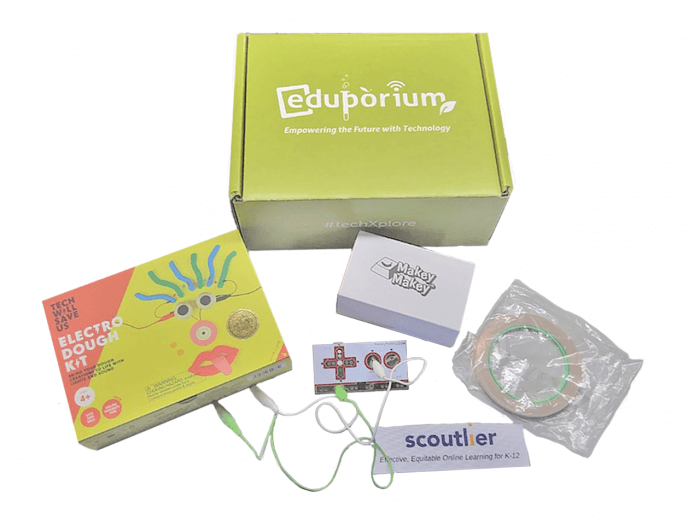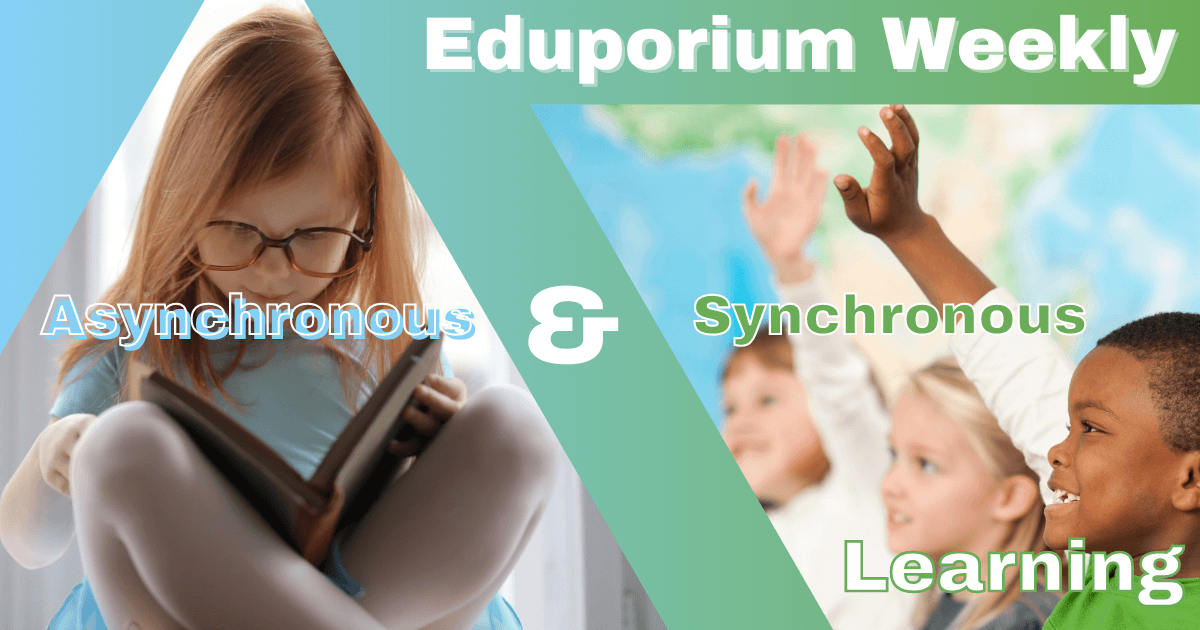First off, let us welcome you to 2021 and wish you a happy new year! We know that 2020 was unexpected and hope 2021 brings with it a return to normal life and learning experiences. We certainly hope everybody can return to the classroom soon but know that remote learning topics will still dominate discussions. Among those topics is the debate between synchronous and asynchronous learning—a couple of buzzwords you’ve likely come across since the start of your research on distance learning strategies. They have each become important topics and the subtle features of each are important for today’s educators to know.
Defining Synchronous and Asynchronous Learning
There are a handful of different ways to look at synchronous and asynchronous learning as it pertains to remote education and, undoubtedly, there will be subtle distinctions in almost every approach to how teachers educate their students when not in the classroom. The key indicator of whether learning is synchronous or asynchronous is if students are present for meetings or discussions. Learning can also be synchronous sometimes and asynchronous other times or alternated based on class, subject, age, or student mastery. Examples of synchronous learning typically include class-wide lessons or lectures that teachers deliver to all students live. Asynchronous learning often involves students watching recorded presentations on their time and completing the same assignments as classmates.
Deciding which one to implement.
Allowing the asynchronous option for learning outside the classroom can have various benefits for students. It can also determine success of virtual learning, which comes back to students having access information and demonstrating knowledge. These days more than ever, most students prefer one of the four learning styles and there are often small differences in their preferences when it comes to how they receive their education. When learning in an asynchronous way, the flexibility that’s created helps students choose what works best for them. Since the content is presumably all available online, students can learn asynchronously at any time from any location. They can still do all of the things they need to do, like access content, ask questions, practice skills, and show understanding, but they’re doing it on the schedule and at the pace that’s best.
Understanding synchronous learning.
Synchronous learning implies that students will be meeting as a class with their teachers at the same time every day or every week—just like they would when actually at school. They will presumably still have quizzes, tests, and assignments and could possibly access scheduled chat sessions with teachers for clarification. Synchronous learning could also include scheduled small-group sessions for students to discuss topics among themselves or work on group projects. Asynchronous learning, on the other hand, does involve a lot of educational content that is not delivered to students live. These can include video, email, discussion, and social media resources as well as online documents, like Google Docs, that they can collaborate on without having to do so in real time. Like we said, however, exploring either synchronous or asynchronous learning takes time and often involves feeling out what works best.
Benefits of Asynchronous Learning
When choosing between the two, teachers may realize benefits for students with different learning styles or students of different ages. Since asynchronous learning is more novel to a lot of teachers and students, they're discovering potential benefits to this shakeup, which include things many of them never really had to consider previously. As remote and hybrid learning continues, both teachers and students have become accustomed to benefits of asynchronous learning. The most noticeable benefits include increased flexibility, the option for students to move through content and assessments at their own individual pace, the chance to try new, virtual forms of collaboration, and new ways for them to show mastery.
When to use asynchronous learning.
These days, with so many working from home, flexibility has become a very common word throughout education. Asynchronous learning helps teachers accommodate their students at the points in time that work for them and their families. This is especially crucial in families with more than one child and those with parents who are working at the same time as instruction. Being able to access video content or other learning materials at different times of the day, like the evening, can truly do wonders for ensuring that students get their education and parents are able to do the things they need to do. As for mastery, tests and quizzes can't always happen in the remote classroom, so students use portfolios to demonstrate knowledge. They can build online portfolios of original projects or start collections of resources they’ve used in learning.
Further understanding the benefits.
One of the other benefits of asynchronous learning is the opportunity for self-paced learning. Not only can students move through content at their own pace, they can also theoretically create and stick to their own schedules, allowing them to complete work when the time is right. This also helps them focus more on areas they’re struggling with as opposed to rushing to meet deadlines. Finally, collaboration can actually be a big part of asynchronous learning though it may not always be real-time collaboration. With message boards or Google Docs, students can share ideas and work on their own time while receiving peer inspiration. Since collaboration is a huge part of 21st century learning, this is obviously very valuable. They can also still contact teachers when they need help, which creates a more synchronous learning experience overall despite isolation.

Strategies and Preparations for Asynchronous Learning
As an educator, you may find asynchronous learning works best for your or for your students (or both). Or, you may find yourself in the position of being asked to give it a try by an administrator. In any case, having a plan for delivering effective asynchronous instruction is as important as developing traditional lesson plans. Like we’ve said, video lessons and supplemental video content are big components of asynchronous learning and teachers have been known to record the lectures they would have delivered to students live for them to view at any time. Combining video content with supporting text resources or photos can also be very helpful. Finding and sharing videos with explanations and demonstrations of applying certain skills can also help students better understand instruction.
Implementing asynchronous learning initiatives.
Asynchronous learning can also feature class or small-group discussions that don’t necessarily have to be live. Using discussion boards or other threads can allow students to collaborate on their own time. Group projects can still take place as well using tools like Google Docs and, if possible, Google Meet. Since they’re working remotely, teachers might also find benefit in introducing students to task management tools. Besides that, educators can create assignments using online platforms and, if possible, let students choose how they show understanding. This could involve completing challenges within one of the platforms, creating a multimedia report, or even asking students their preferences. Giving students choice in remote learning has been one way that educators have been able to keep them engaged.
Moving from synchronous to asynchronous learning.
Some ways to prepare for transitioning to asynchronous learning or developing a long-term model center on the needs of students. It’s crucial that teachers continue providing feedback and set aside one-on-one time with any student who needs it. Lessons and instructional content also need to remain accessible for all students and just because they can theoretically access it on their own time doesn’t make it fully accessible. Teachers might need to consider how high-quality videos could slow down Internet connections for students in certain areas, for example. Finally, moving beyond simple assignments and challenging students to think critically and collaboratively is much more valuable to them. If this can be done in your remote learning—whether synchronous or asynchronous—it’s often worth exploring.
How to Choose Between Synchronous or Asynchronous
For educators who have leeway to decide if instruction should be synchronous or asynchronous, there are reasonable factors to consider. Like in making any decision, weighing the pros and cons as well as the feasibility and long-term viability of each model certainly comes into play and teachers can definitely draw on the distance learning experiences they’ve had so far as well. Students in different schools and grade levels have different academic, technological, and emotional needs that their teachers would typically meet. One of the first things educators might want to look at when deciding between synchronous and asynchronous learning models is the technology students in each class are equipped with as well as their schedules. This might vary between classes, so teachers may have to decide if they’ll teach 100 percent one way or alternate.
How access impacts efforts.
The first thing to consider is student Internet access as well as Internet speed and reliability. Teachers might also want to survey students and parents to get a sense of their home learning space and if it would be better conducive to synchronous instruction or asynchronous instruction. Assessments and lessons plans would differ between models and so would preparing parents and students for how learning will unfold. For instance, in synchronous meetings, students will be expected to be on time and to participate as needed while, in asynchronous learning, they’d be expected to focus on the assignments without teacher supervision. Determining student and parent preferences can be a good way for teachers to decide on their plans. And, as you’d probably expect, after completing initial surveys, some pros and cons of each option will appear but you can use them in deciding whether to continue or revert back.
Synchronous instruction and building connections.
The biggest benefit of synchronous instruction is that it allows all students to connect with each other and teachers live. This leads to more authentic interactions, especially between teachers and students, and allows questions to be answered in real-time. Being live with teachers requires streaming video, however, and that requires a strong Internet connection. The pros of asynchronous learning allow students to learn independently, organize their days, and access content in their preferred way. Being able to access shared content anytime helps with scheduling and if parents or students want to revisit something later. In either case, choosing between synchronous and asynchronous learning is just the beginning. Both models still require effective pedagogy to be valuable for students and allow them to continue to grow academically.

STEM Tools for Asynchronous and Synchronous Learning
To round out this analysis of synchronous and asynchronous learning, we’ll do what we often do—talk about how tangible and virtual STEM tools fit into play, giving two examples of asynchronous STEM options and our favorites for synchronous instruction. One of the best virtual STEM solutions we’ve seen since the onset of remote learning is the virtual Dash Robot in the Dash’s Neighborhood programming environment. Using this platform, students can complete assigned lessons at their own pace and when they have time to do so. The platform can also track student coding progress and inform teachers about any who may potentially be struggling. Students can try coding with the virtual Dash asynchronously and don’t necessarily need teachers to keep their coding education going.
STEM in synchronous learning.
For STEM experiences in synchronous learning, we’ve actually worked with professionals from the Scoutlier team to collaboratively develop a remote learning solution that helps foster STEM experiences from anywhere. Known as the Learning: Everywhere Kit, students can complete hands-on STEAM projects using the included materials and pair those tangible making experiences with digital curriculum and lesson plans found within the Scoutliter platform. In this particular kit, we offer some of the Tech Will Save Us Electro Dough, a Makey Makey, conductive dough, conductive tape, extra batteries, and easy access to the Scoutlier environment. From there, teachers can lead synchronous lessons and, to learn about the kit, we invite you to contact our team.
Some final thoughts for teachers.
Now for one last virtual and asynchronous recommendation. Like the virtual Dash platform, additional online versions of popular educational robotics tools have popped up since the pandemic began. One of those is the digital version of the Root Robot, a popular programmable robot for students in K-12. Students can create programs in the same three levels of programming (block, hybrid, and text) that they would with the physical Root and see them play out immediately with the virtual robot on the screen. Another option is the virtual Tello EDU drone, which students and teachers can access if they sign up for one of the new DroneBlocks memberships. It’s similar to the other tools and students can see a tiny, virtual drone take flight on their screen once they’ve created programs!
If you have any questions about using STEM tools in synchronous, asynchronous, remote, or hybrid learning, we’re here to help. Feel free to contact the Eduporium team or explore additional resources on our blog, Twitter, and Instagram. From all of us, we wish you a Happy New Year and look forward to continuing to help educators innovate with meaningful technology in whatever teaching environment they’re using in 2021!



